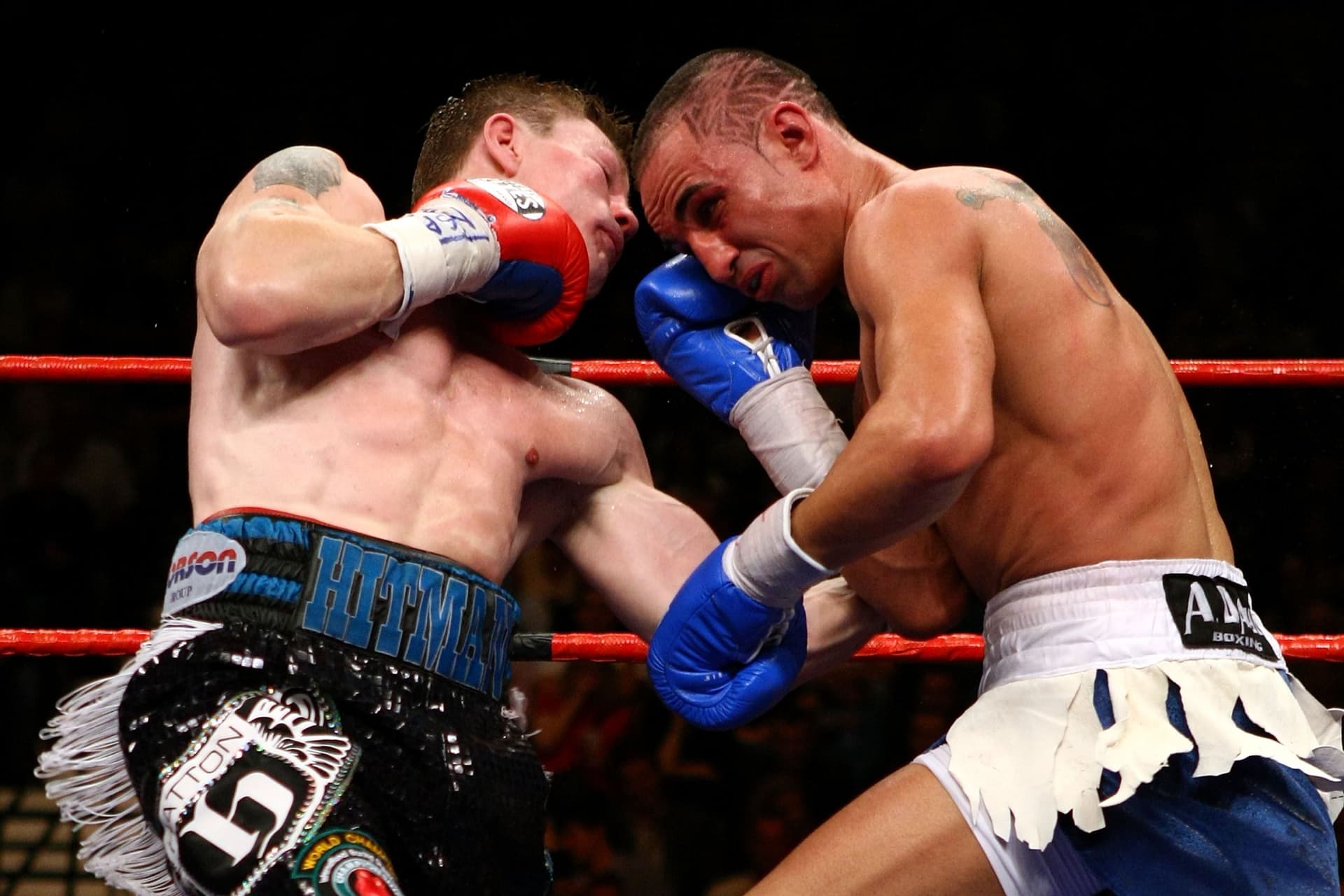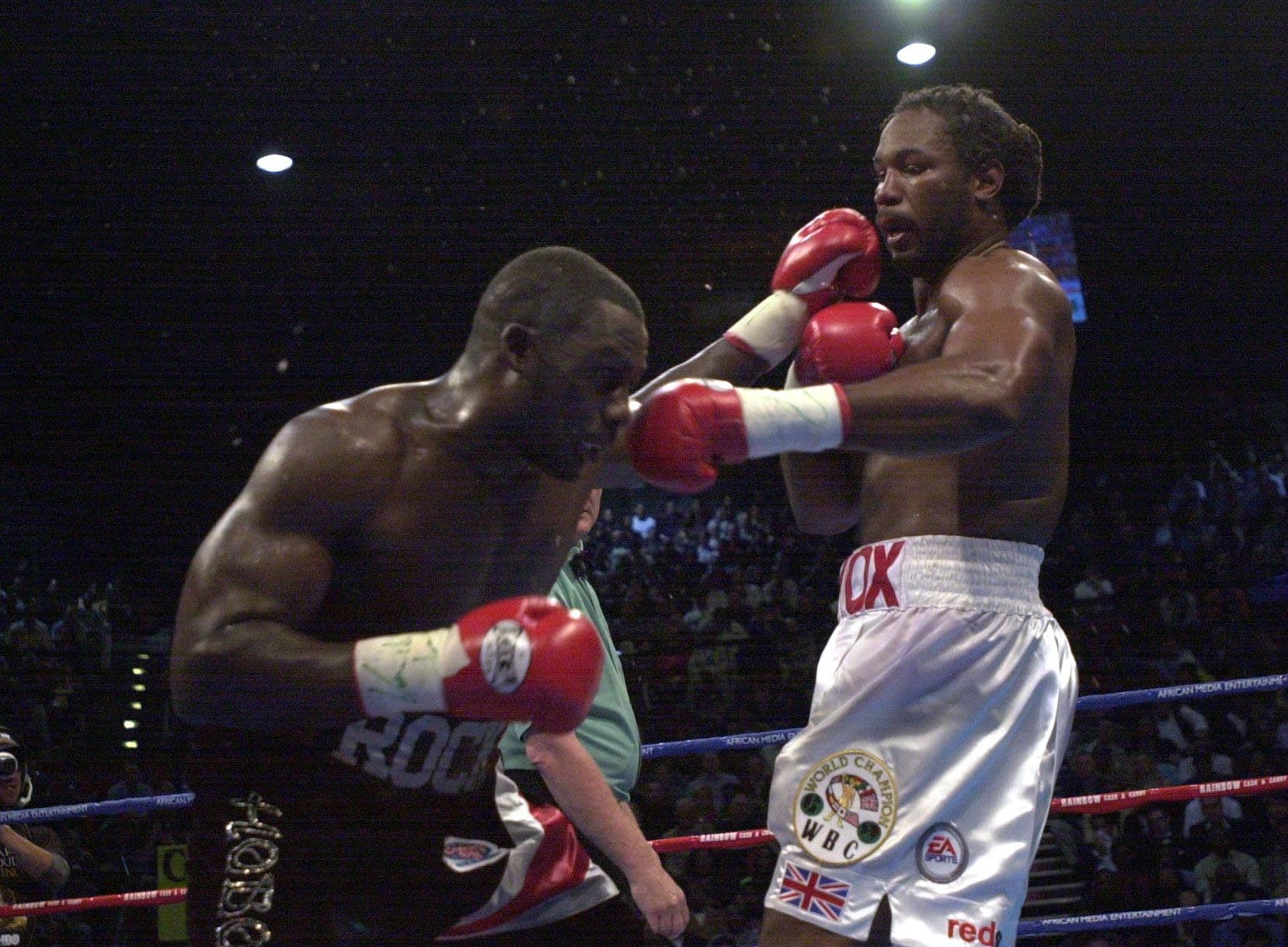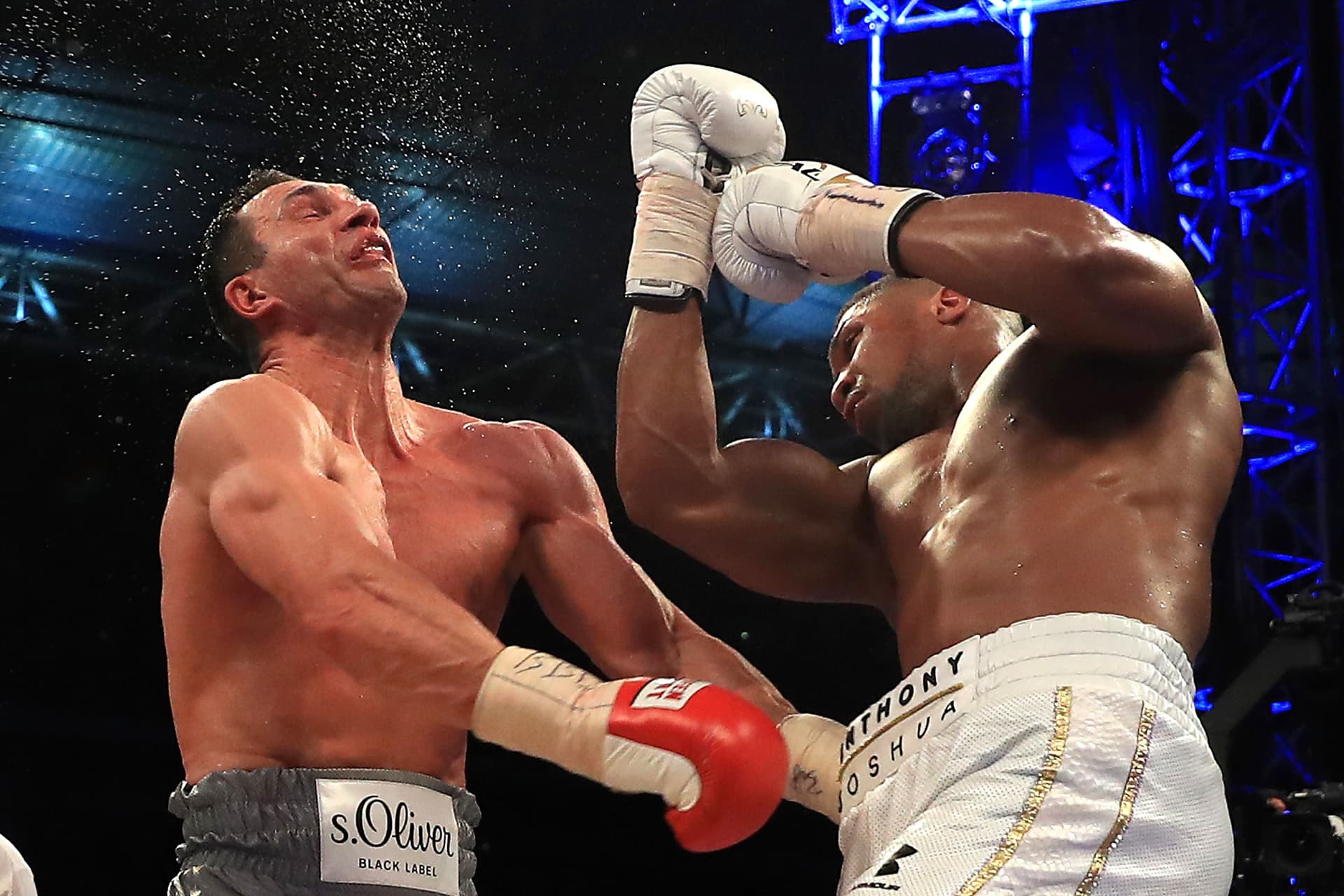Boxing
From Lead Hook to Uppercut: Boxing Hook Variations Explained
The hook is one of many punches in boxing, but did you know there’s many variations of this powerful punch? Learn more now!

Ricky Hatton and Paulie Malignaggi//Getty Images
Hooks and uppercuts explained
There are four main types of punches in boxing – jab, cross, hook, and uppercut. However, they each have multiple variations that offshoot from these.
The most powerful punch of this group is the hook and it has been the cause of thousands of knockouts in boxing history.
This effective punch can be thrown in a number of ways, each requiring different techniques. Read on to discover SportsBoom’s guide to hooks and uppercuts.
The Hook
The hook is a difficult punch to master, as it requires a lot of technique. The fist must be held up high, hand close to the head and with the elbow positioned at a right angle, so it’s shaped like a hook, and must be thrown around the side with the palm facing the floor and the forearm kept straight, so it’s always in line with the head.
With the correct use of legs and hips turning into the punch, more force can be created. One of the most common combinations is the one-two followed by the hook. So the jab, followed by the straight cross will leave the boxer turned to one side in the perfect position to twist back the other way with a hook.
The Lead Hook
The lead hook is different to a normal hook and harder to land because there’s no prior moves for it to naturally flow from.
The best way to land a lead hook is to line it up with a feint, so the boxer will slip to one side and rotate back with the hook.
The Body Hook
The body hook is more difficult to throw than a higher placed hook due to positioning. The boxer must dip down low to one side in order to land the hook further down, leaving them more exposed.
It’s because of this transfer of weight to one leg that generates so much power. A perfect body hook can stop a fight in seconds. Ricky Hatton and Mike Tyson were both known for being exceptional body punchers.
The Check Hook
The check hook is possibly the most respected, eye-catching and skilful of all hooks. It’s thrown at the exact same time the boxer pivots to one side to step out of the path of an oncoming attack, making it the most difficult of all hooks to master. It’s all about timing and precision and it’s incredibly risky because the boxer has to leave themselves open to the oncoming attack and trust that they will be able to pull off the chancy move perfectly.
Perhaps the most perfect example of this punch, was when Floyd Mayweather Jr. used it to maximum effect against Ricky Hatton in round 10 of their 2010 fight. The aggressive, advancing Hatton came forward in a straight line and telegraphed his left hook he intended to throw, to which Floyd cleverly threw his left hook while pivoting away to his left, sending the Brit crashing into the corner stanchion.
The Shovel Hook
Also known as an upper hook or hooker-cut, this punch is a hybrid of the hook and the uppercut. It’s essentially a hook that’s thrown upwards, more diagonally than an uppercut that comes directly upwards or a hook that comes horizontally around the side.
This punch is best thrown on the inside, as it will come from an angle that’s incredible hard to block or defend against.
The Short Hook
You would imagine that hook with more swing that travels furthest to land on the target would have the biggest effect, but it’s actually a short hook, which only travels a few inches and is more potent.
A short hook can only be thrown within close range, but the way that it’s whipped through the opponent’s chin with a snap of the elbow is what makes it so powerful and effective.
The Long Hook
The long hook is thrown from range and looks incredibly similar to a cross as it’s almost thrown straight. The long hook is thrown almost as a range-finder and doesn’t possess huge power due to the boxer not putting his entire body behind the punch.
The Leaping Hook
The leaping hook is thrown from range as it requires the boxer to leap forward into it. This means the boxer is able to land this hook without stepping into range, however, if it misses, it leaves the boxer wildly exposed and out of position. It also requires the boxer to shape up to land it, meaning it could be telegraphed if the move isn’t made quick enough.
Featherweight world champion Nick Ball is shorter than most other 126-pounders, so he uses a leaping hook to shut down the distance between his opponents.
This punch is also referred to as a gazelle punch.
The Double Hook
Doubling up on the hook is risky but rewarding. Unlike the jab or a cross, the hook is a punch that leaves a boxer exposed, so hanging around in an exposed position to land a second shot can be perilous.
A double hook is mostly used with both hands; for example, the left hook leaves the boxer turned to his right and can naturally rotate back the other way with the right hook. But a double hook can also be used in other variations, such as two left hooks to the head, or a left to the body and right up top, a left and right to the body, and so on.
Roy Jones Jr. was nicknamed ‘Captain Hook’ for his mastery of the punch. RJJ was a pure boxer-puncher with incredible skill and technique, and its because of his dexterity and coordination that he was able to land his hooks with such devastating effect. He was confident and elusive enough to land double hooks copiously.
The Signature Hooks

Hasim Rahman and Lennox Lewis//Getty Images
Signature hooks are punches that are unique to an individual fighter.
Mexican megastar Canelo Alvarez has a signature hook that he invented himself, where he lines up to throw an exaggerated left hook to the body, but mid-swing, he changes its direction from low to high and brings up to the head of his opponent.
The four-weight world champion uses this in every single fight and it’s always effective. In his last fight with Edgar Berlanga, he dropped him with this signature shot in the third round.
The Uppercut
The uppercut is a powerful punch and the only one that comes from an upwards angle; all others come from forwards or around the side. It’s because of this unusual direction that it often catches opponents unaware.
To throw this shot correctly, the forearm has to travel vertically with the palm facing towards the boxer and the fist facing the opponent. Dipping the legs to drive the punch upwards will create more force.
One of the best examples of an uppercut catching an unsuspecting opponent out was when Anthony Joshua landed his hellacious uppercut against Wladimir Klitschko in the 11th round of their Wembley super-fight in 2017.

Anthony Joshua and Wladimir Klitschko//Getty Images
The hook travels the shortest distance of any punch. Jabs and crosses have to travel further and thrown from range, but a hook travels the shortest distance from launch to target.
The Best Hookers
The short list below shows the different variations of hooks and the boxers in history who mastered them.
| Hooks | Fighters |
| Lead Hook | Joe Frazier, Felix Trinidad, Ricky Hatton |
| Body Hook | Julio Cesar Chavez, Roberto Duran, Henry Armstrong |
| Check Hook | Floyd Mayweather Jr., Nonito Donaire, Thomas Hearns |
| Double Hook | Roy Jones Jr., Fabio Wardley, Nigel Benn, Ricky Hatton |
| Leaping Hook | Nick Ball, Roy Jones Jr., Joe Frazier, Floyd Patterson |
| Uppercut | Anthony Joshua, Mike Tyson, George Foreman |

Tim has over 27 years experience within the sports industry, working for football clubs Arsenal FC and Millwall FC, and boxing news websites British Boxing News, Boxing Social and Global Boxing News. His boxing articles have been published in Boxing News Magazine, national newspapers, plus many other major news outlets.